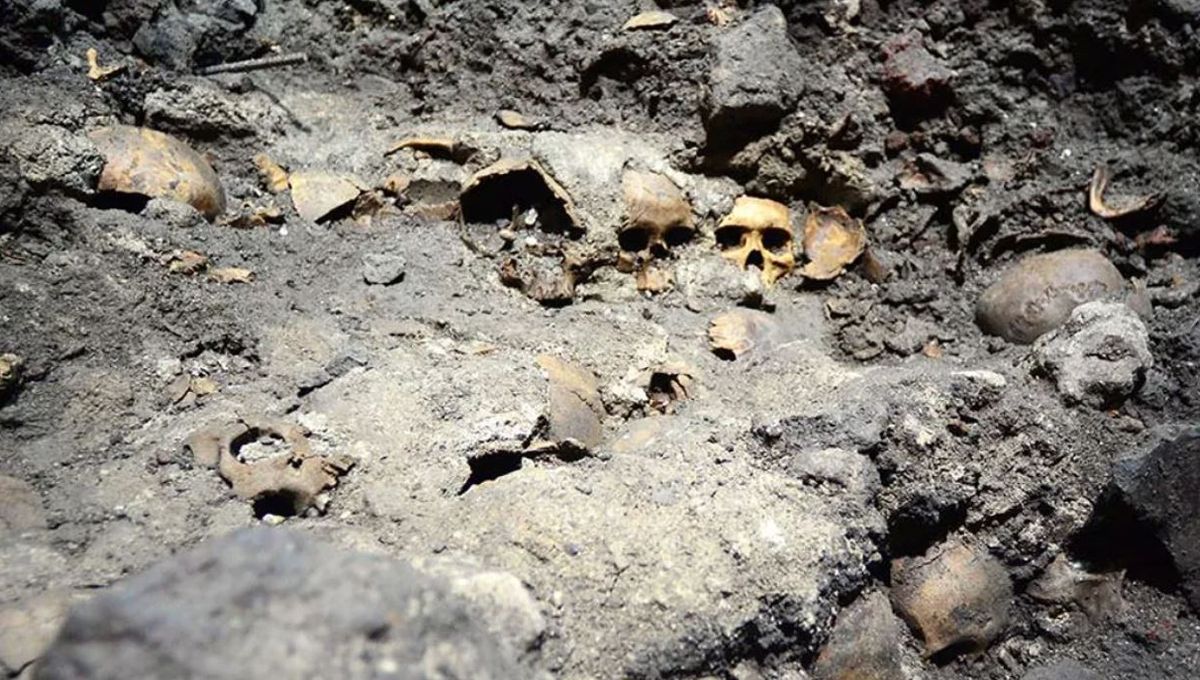
A tower of human skulls in the ancient Aztec capital of Tenochtitlan contains a surprisingly high proportion of crania belonging to women. Presenting the latest research on the grisly pillar, archaeologist Raúl Barrera Rodríguez explained that of the 655 skulls identified so far, 38 percent had been whipped off of female necks.
Speaking at an event organized by Mexico’s National Institute of Anthropology and History (INAH), Barrera Rodríguez said that the Aztecs may have sacrificed large numbers of women in order to recreate the mythical battle between the sun god Huitzilopochtli and his lunar sister, Coyolxauhqui. Located within the chapel of Huitzilopochtli at the Templo Mayor complex, the enormous skull rack – or tzompantli – was first discovered in 2015 before another enormous section was unearthed three years later.
The patron of the Aztec capital of Tenochtitlan, Huitzilopochtli was also the god of war and of human sacrifice. Given their form when it comes to such matters, it’s unsurprising that the Aztecs are thought to have constructed the tower out of the skulls of sacrificial victims.
“The goal of sacrifice was to offer up the most valuable thing a human being possesses: his/her life, as sustenance to the sun god, in order to make the sunrise possible and therefore guarantee the continuation of the world,” said Barrera Rodríguez in a statement. According to historical records, captured warriors were dragged to the Templo Mayor and dispatched by a priest who would cut out their still-beating heart, holding it aloft as an offering to Huitzilopochtli before cutting off the victim’s head and adding it to the tzompantli.
It’s thought that the body would then be tossed from the sacrificial altar, symbolically recreating the climax to the battle between Huitzilopochtli and Coyolxauhqui, which ended with the sun god throwing the dismembered body of his sister from the sacred mountain Coatepec. That so many of the retrieved skulls belonged to women suggests that the Aztecs may have used female sacrificial victims to enhance the authenticity of this re-enactment.
Exactly where these unfortunate actresses were plucked from is difficult to say, as most Aztec sacrifices involved captured soldiers. Overall, 60 percent of the skulls in the enormous tzompantli belonged to males between the ages of 25 and 35.
“Historical sources contain few mentions of female warriors, although we know that this status was afforded to women who died in childbirth,” says Barrera Rodríguez. “We also have testimonies such as that of the Spaniard Francisco de Aguilar, who reported that during the final siege of Tenochtitlan, many women took up arms and defended the city.”
Two percent of the skulls have also been identified as belonging to children. While we don’t know why these youngsters were sacrificed, Rodríguez says they may have represented the infant Huitzilopochtli during re-enactments of the sun god’s birth.
Source Link: One-Third Of Aztec Human Skull Tower Contained Heads Of Sacrificed Women